


Solo exhibition -
CAMILLE BENARAB-LOPEZ
SCARS/SIRENS
From 04 May to 22 June 2024
Opening Saturday 04 May, 16h - 20h
Paris Gallery Weekend, from 24 to 26 May

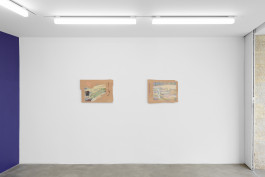
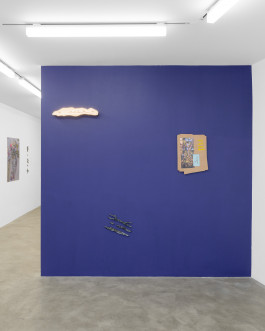

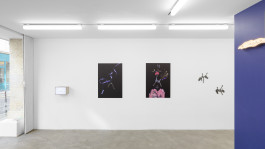


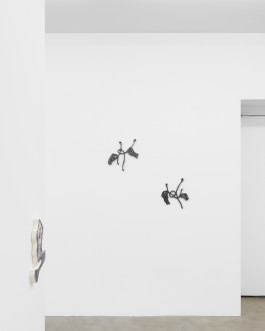
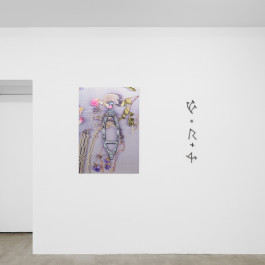

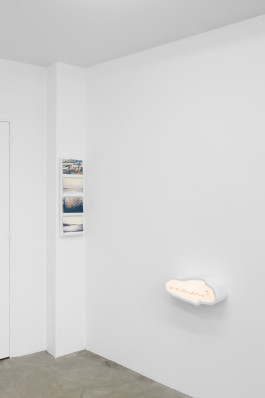
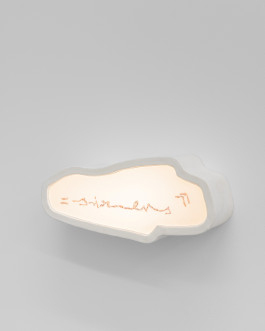
Exhibition views of scars/sirens, Camille Benarab-Lopez, 2024 - Photos: Grégory Copitet © GALERIE CHLOE SALGADO
Exhibition views of scars/sirens, Camille Benarab-Lopez, 2024 - Photos: Grégory Copitet © GALERIE CHLOE SALGADO
Exhibition views of scars/sirens, Camille Benarab-Lopez, 2024 - Photos: Grégory Copitet © GALERIE CHLOE SALGADO
Exhibition views of scars/sirens, Camille Benarab-Lopez, 2024 - Photos: Grégory Copitet © GALERIE CHLOE SALGADO
Exhibition views of scars/sirens, Camille Benarab-Lopez, 2024 - Photos: Grégory Copitet © GALERIE CHLOE SALGADO
Exhibition views of scars/sirens, Camille Benarab-Lopez, 2024 - Photos: Grégory Copitet © GALERIE CHLOE SALGADO
Exhibition views of scars/sirens, Camille Benarab-Lopez, 2024 - Photos: Grégory Copitet © GALERIE CHLOE SALGADO
Exhibition views of scars/sirens, Camille Benarab-Lopez, 2024 - Photos: Grégory Copitet © GALERIE CHLOE SALGADO
Exhibition views of scars/sirens, Camille Benarab-Lopez, 2024 - Photos: Grégory Copitet © GALERIE CHLOE SALGADO
Exhibition views of scars/sirens, Camille Benarab-Lopez, 2024 - Photos: Grégory Copitet © GALERIE CHLOE SALGADO
Exhibition views of scars/sirens, Camille Benarab-Lopez, 2024 - Photos: Grégory Copitet © GALERIE CHLOE SALGADO
Exhibition views of scars/sirens, Camille Benarab-Lopez, 2024 - Photos: Grégory Copitet © GALERIE CHLOE SALGADO
The exhibition Scars/Sirens takes as its starting point a book by Joyce Carol Oates, We Were the Mulvaneys (1996), and a journey by Camille Benarab-Lopez to the state of New York, tracing the fictional history of this typically American family. In the novel, the Mulvaneys form an ideal, apparently close-knit family, attached to the land as much as to the appearances of happiness they exude. But the story is one of a social collapse that is taking place both outside and inside the family unit itself: the bonds are cracking and splitting into a wound that no balm can heal. At once terrible and formidable, the Mulvaneys are portrayed in all their psychological complexity, trying to hold their own in an America marked by the tyranny of appearances. The literal sense quickly merges with the figurative: Oates - also the author of another book, The Falls - sets the scene for the drama in a region studded with mythical waterfalls: from Ithaca Falls to the famous Niagara Falls. Life goes on at a leisurely pace until a sharp drop in altitude produces a steep descent, otherwise known as a cataract, a term used to describe an opacification that clouds both the water and the lens of the eye. The sound of the waterfall echoes the deterioration of sight. In addition, the radical cata- indicates a downward movement, like that of the sirens described in Greek mythology, half-human, half-animal creatures whose outward charm lures sailors to the depths and their doom. The shadow of this myth hangs over the family trauma: it's the feeling of engulfment that takes precedence.
As she does regularly in her work, Camille Benarab-Lopez interweaves research into social injury, attention to collected narratives and a strong interest in the sign in all its forms. The exhibition is divided into three sections, each introduced by an illuminated sign: « Falls », « Scars » and « Sirens ». These signs can be stigmata of pain, but also trophies of war or emblems of courage and love. They can also be the markers of a narrative structure for a story that always ends up leaving an indelible mark on people: the fall (« Falls »), the wound that survives (« Scars »), and then the call of a new horizon (« Sirens »). Piles of scattered documents, inscriptions engraved on vaporous landscapes, hands tying knots, graphemes from a rare alphabet, wounds edged with flowers: reality and fiction are not dichotomous opposites, but merge in a complex set of symbols. The family album, with all its unspoken words and secrets, is presented in visual enigmas, as if to remind us that the image of the memory counts more than the memory itself. In other words, relationships are as much emotional as they are imaginary, and we unknowingly carry out the plans of lives other than our own. At the beginning of the novel, Judd, the youngest of the Mulvaneys, recalls a family event that took place before he was born: « I'd swear even now, I'd been there. »
Elora Weill-Engerer
_
Born in 1989 in Paris, Camille Benarab-Lopez graduated from the École Nationale Supérieure des Arts Décoratifs (2014) and the École Nationale Supérieure des Beaux-Arts de Paris (2018). Camille Benarab-Lopez explores our relationship to the image, its temporality, and flatness, in both a pictorial and sculptural approach. In response to a world where “content is nothing but more images,” multiplying and intruding even into intimate spaces, the artist aims to contain, preserve, and enclose the flood of invading images through correspondences or dissonances. Impressions, transfers, recompositions, addition or subtraction of material—she gives them a new substance through a series of diverse actions, weaving a narrative in dots and dashes. The image gets lost and recreated, transformed through mediums and techniques, thwarted and fragileized by the successive stages of its construction. In a sudden emergence, it appears to the world in a new, plural, and sensitive way, offering itself to the viewer as an illusory space to decipher.
Solo exhibition -
CAMILLE BENARAB-LOPEZ
SCARS/SIRENS
From 04 May to 22 June 2024
Opening Saturday 04 May, 16h - 20h
Paris Gallery Weekend, from 24 to 26 May












Exhibition views of scars/sirens, Camille Benarab-Lopez, 2024 - Photos: Grégory Copitet © GALERIE CHLOE SALGADO
Exhibition views of scars/sirens, Camille Benarab-Lopez, 2024 - Photos: Grégory Copitet © GALERIE CHLOE SALGADO
Exhibition views of scars/sirens, Camille Benarab-Lopez, 2024 - Photos: Grégory Copitet © GALERIE CHLOE SALGADO
Exhibition views of scars/sirens, Camille Benarab-Lopez, 2024 - Photos: Grégory Copitet © GALERIE CHLOE SALGADO
Exhibition views of scars/sirens, Camille Benarab-Lopez, 2024 - Photos: Grégory Copitet © GALERIE CHLOE SALGADO
Exhibition views of scars/sirens, Camille Benarab-Lopez, 2024 - Photos: Grégory Copitet © GALERIE CHLOE SALGADO
Exhibition views of scars/sirens, Camille Benarab-Lopez, 2024 - Photos: Grégory Copitet © GALERIE CHLOE SALGADO
Exhibition views of scars/sirens, Camille Benarab-Lopez, 2024 - Photos: Grégory Copitet © GALERIE CHLOE SALGADO
Exhibition views of scars/sirens, Camille Benarab-Lopez, 2024 - Photos: Grégory Copitet © GALERIE CHLOE SALGADO
Exhibition views of scars/sirens, Camille Benarab-Lopez, 2024 - Photos: Grégory Copitet © GALERIE CHLOE SALGADO
Exhibition views of scars/sirens, Camille Benarab-Lopez, 2024 - Photos: Grégory Copitet © GALERIE CHLOE SALGADO
Exhibition views of scars/sirens, Camille Benarab-Lopez, 2024 - Photos: Grégory Copitet © GALERIE CHLOE SALGADO
The exhibition Scars/Sirens takes as its starting point a book by Joyce Carol Oates, We Were the Mulvaneys (1996), and a journey by Camille Benarab-Lopez to the state of New York, tracing the fictional history of this typically American family. In the novel, the Mulvaneys form an ideal, apparently close-knit family, attached to the land as much as to the appearances of happiness they exude. But the story is one of a social collapse that is taking place both outside and inside the family unit itself: the bonds are cracking and splitting into a wound that no balm can heal. At once terrible and formidable, the Mulvaneys are portrayed in all their psychological complexity, trying to hold their own in an America marked by the tyranny of appearances. The literal sense quickly merges with the figurative: Oates - also the author of another book, The Falls - sets the scene for the drama in a region studded with mythical waterfalls: from Ithaca Falls to the famous Niagara Falls. Life goes on at a leisurely pace until a sharp drop in altitude produces a steep descent, otherwise known as a cataract, a term used to describe an opacification that clouds both the water and the lens of the eye. The sound of the waterfall echoes the deterioration of sight. In addition, the radical cata- indicates a downward movement, like that of the sirens described in Greek mythology, half-human, half-animal creatures whose outward charm lures sailors to the depths and their doom. The shadow of this myth hangs over the family trauma: it's the feeling of engulfment that takes precedence.
As she does regularly in her work, Camille Benarab-Lopez interweaves research into social injury, attention to collected narratives and a strong interest in the sign in all its forms. The exhibition is divided into three sections, each introduced by an illuminated sign: « Falls », « Scars » and « Sirens ». These signs can be stigmata of pain, but also trophies of war or emblems of courage and love. They can also be the markers of a narrative structure for a story that always ends up leaving an indelible mark on people: the fall (« Falls »), the wound that survives (« Scars »), and then the call of a new horizon (« Sirens »). Piles of scattered documents, inscriptions engraved on vaporous landscapes, hands tying knots, graphemes from a rare alphabet, wounds edged with flowers: reality and fiction are not dichotomous opposites, but merge in a complex set of symbols. The family album, with all its unspoken words and secrets, is presented in visual enigmas, as if to remind us that the image of the memory counts more than the memory itself. In other words, relationships are as much emotional as they are imaginary, and we unknowingly carry out the plans of lives other than our own. At the beginning of the novel, Judd, the youngest of the Mulvaneys, recalls a family event that took place before he was born: « I'd swear even now, I'd been there. »
Elora Weill-Engerer
_
Born in 1989 in Paris, Camille Benarab-Lopez graduated from the École Nationale Supérieure des Arts Décoratifs (2014) and the École Nationale Supérieure des Beaux-Arts de Paris (2018). Camille Benarab-Lopez explores our relationship to the image, its temporality, and flatness, in both a pictorial and sculptural approach. In response to a world where “content is nothing but more images,” multiplying and intruding even into intimate spaces, the artist aims to contain, preserve, and enclose the flood of invading images through correspondences or dissonances. Impressions, transfers, recompositions, addition or subtraction of material—she gives them a new substance through a series of diverse actions, weaving a narrative in dots and dashes. The image gets lost and recreated, transformed through mediums and techniques, thwarted and fragileized by the successive stages of its construction. In a sudden emergence, it appears to the world in a new, plural, and sensitive way, offering itself to the viewer as an illusory space to decipher.